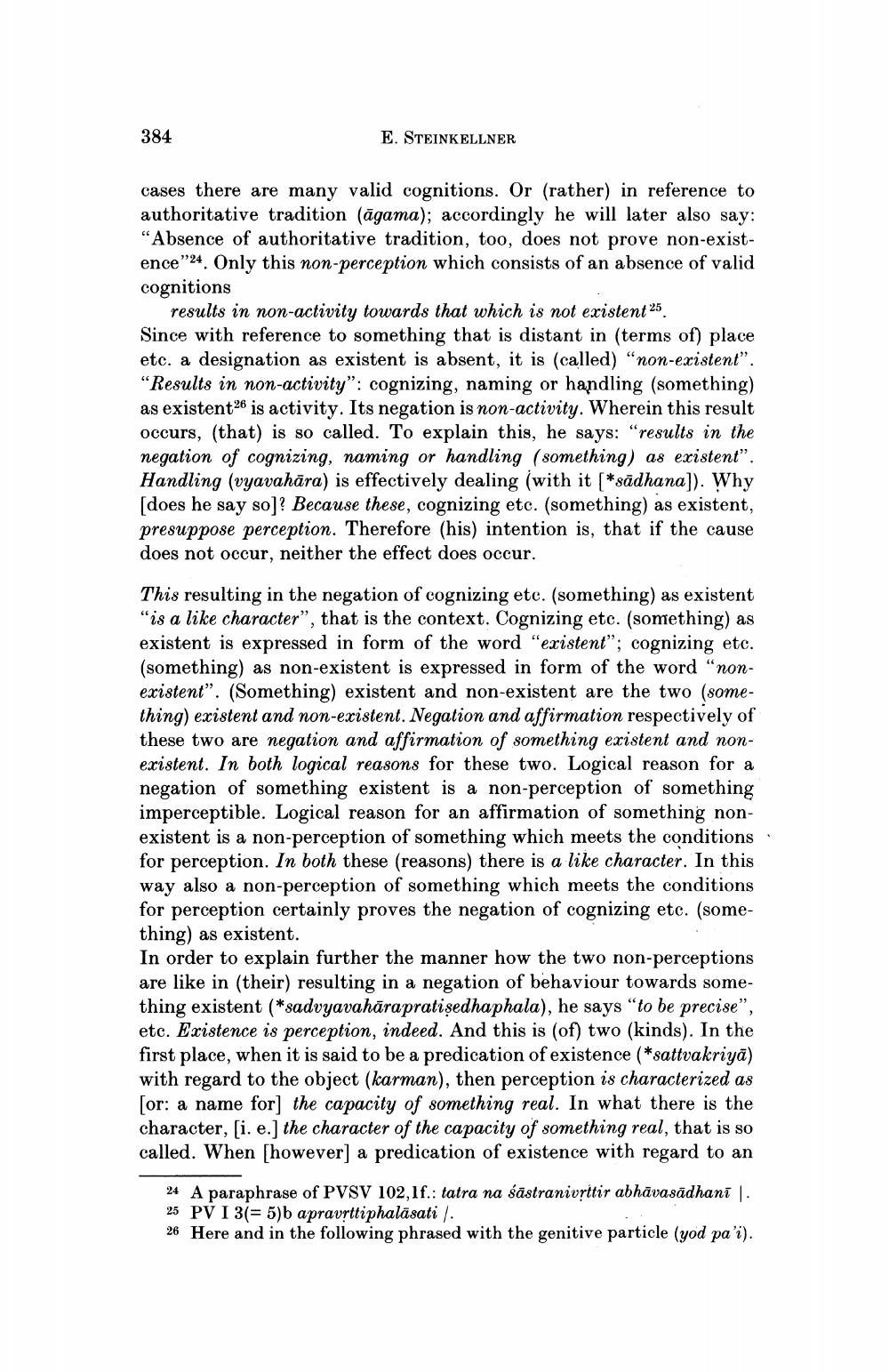Book Title: Sakyabuddhis Commentary On Pramanavarttika I 3 And Its Vrtti Author(s): Ernat Steinkellner Publisher: Ernat Steinkellner View full book textPage 6
________________ 384 E. STEINKELLNER cases there are many valid cognitions. Or (rather) in reference to authoritative tradition (āgama); accordingly he will later also say: “Absence of authoritative tradition, too, does not prove non-existence”24. Only this non-perception which consists of an absence of valid cognitions results in non-activity towards that which is not existent 25. Since with reference to something that is distant in terms of) place etc. a designation as existent is absent, it is (called) "non-existent”. “Results in non-activity": cognizing, naming or handling (something) as existent26 is activity. Its negation is non-activity. Wherein this result occurs, (that) is so called. To explain this, he says: "results in the negation of cognizing, naming or handling (something) as existent". Handling (vyavahāra) is effectively dealing (with it [*sādhana]). Why [does he say so]? Because these, cognizing etc. (something) as existent, presuppose perception. Therefore (his) intention is, that if the cause does not occur, neither the effect does occur. This resulting in the negation of cognizing etc. (something) as existent "is a like character”, that is the context. Cognizing etc. (something) as existent is expressed in form of the word "existent"; cognizing etc. (something) as non-existent is expressed in form of the word "nonexistent". (Something) existent and non-existent are the two (something) existent and non-existent. Negation and affirmation respectively of these two are negation and affirmation of something existent and nonexistent. In both logical reasons for these two. Logical reason for a negation of something existent is a non-perception of something imperceptible. Logical reason for an affirmation of something nonexistent is a non-perception of something which meets the conditions for perception. In both these (reasons) there is a like character. In this way also a non-perception of something which meets the conditions for perception certainly proves the negation of cognizing etc. (something) as existent. In order to explain further the manner how the two non-perceptions are like in (their) resulting in a negation of behaviour towards something existent (* sadvyavahārapratisedhaphala), he says "to be precise", etc. Existence is perception, indeed. And this is (of) two (kinds). In the first place, when it is said to be a predication of existence (*sattvakriyā) with regard to the object (karman), then perception is characterized as [or: a name for] the capacity of something real. In what there is the character, [i. e.) the character of the capacity of something real, that is so called. When showever) a predication of existence with regard to an 24 A paraphrase of PVSV 102,1f.: tatra na śāstranivettir abhāvasādhani . 25 PV I 3(= 5)b apravrttiphalasati ). 26 Here and in the following phrased with the genitive particle (yod pa'i).Page Navigation
1 ... 4 5 6 7 8 9
